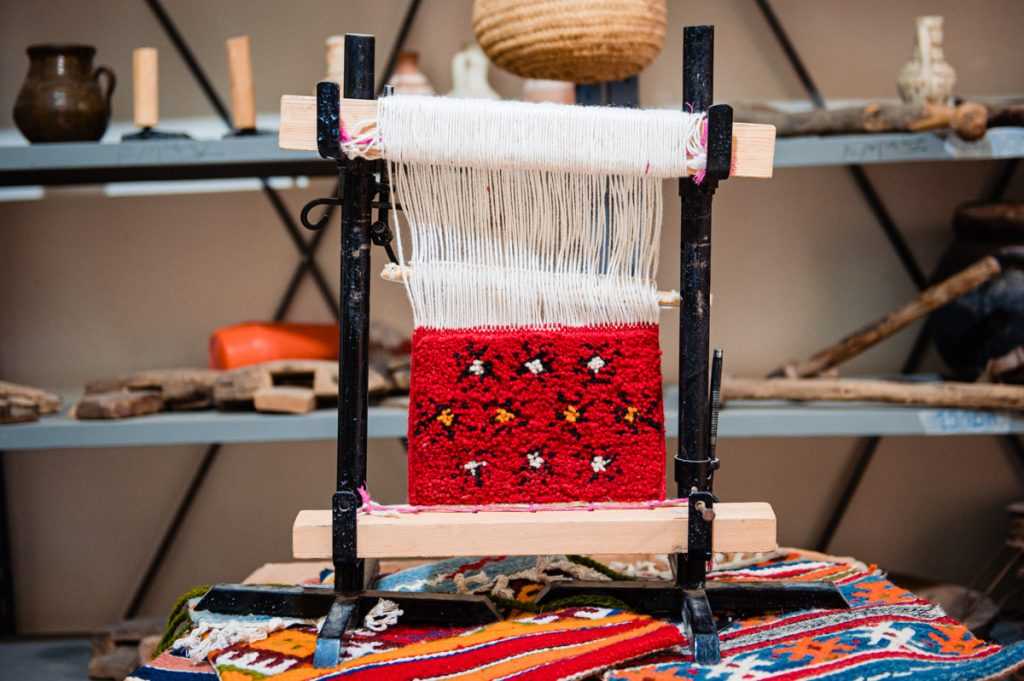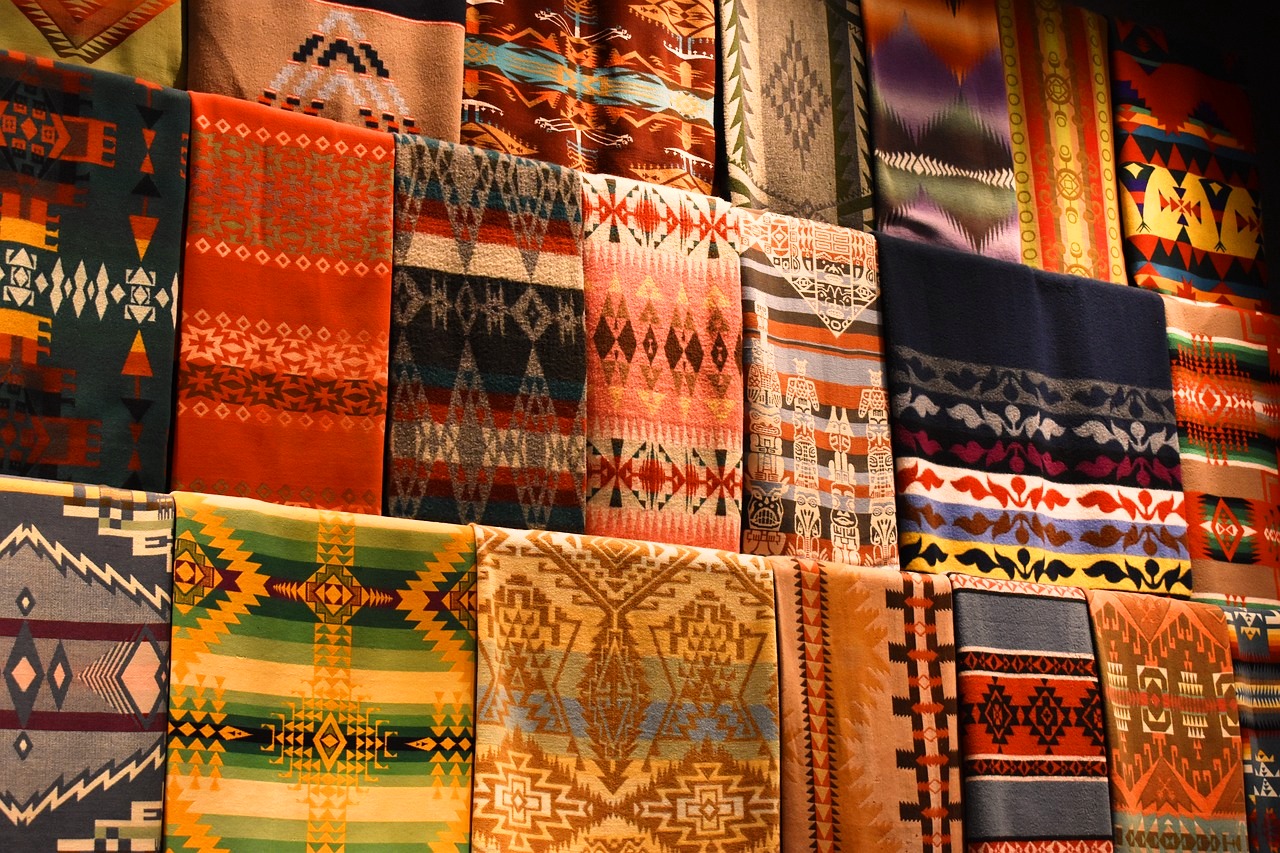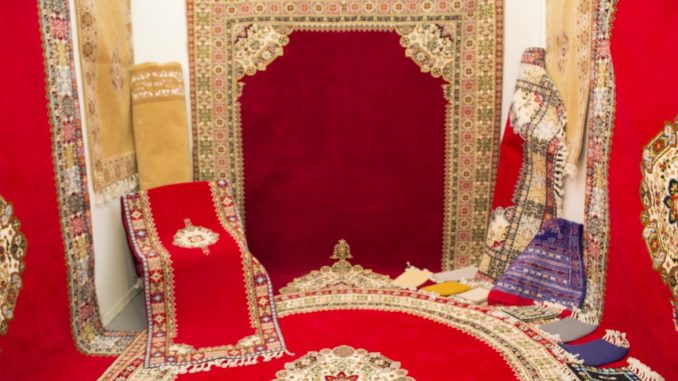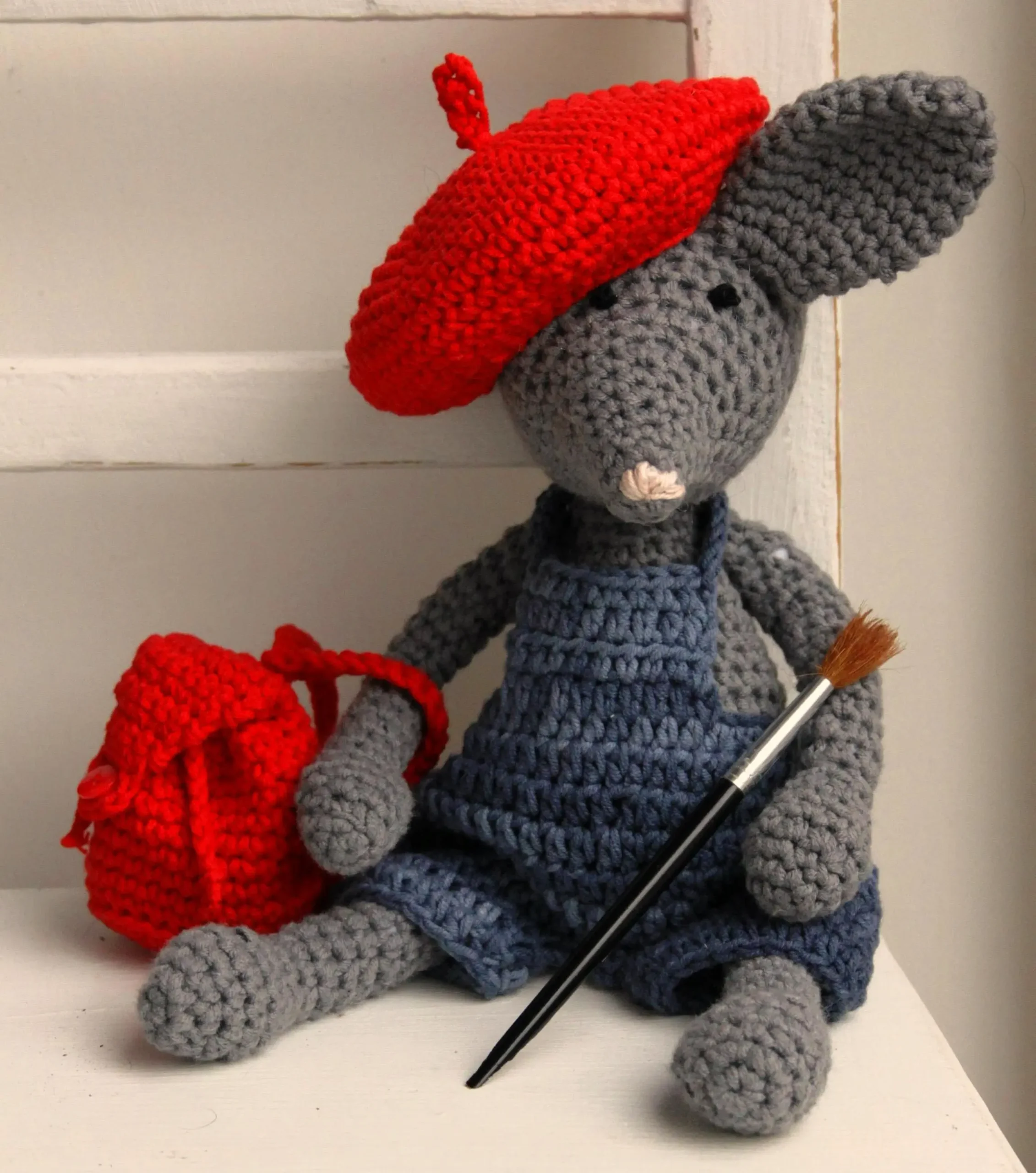
Who among us hasn’t been awed by the beauty of Moroccan rug? With its intricate weaving, natural hues, and artisanal skill, it is a Moroccan masterpiece.
Despite the fact that beauty is a personal experience, Moroccan rug is universally acknowledged, which accounts for its widespread recognition.
Rugs are part of folk art because the majority of people participate in their making.
They vary in size and decoration, but they are similar in the raw materials they use, as they all use pure wool or cotton.
It is dyed with natural colors like henna, saffron, pomegranate and cinnamon.
In Morocco, rugs are famous for being made by female fingers, as local Moroccan rug weavers produce wonderful works that take a long time, requiring them to mobilize intellectual and skillful energies that deserve to be beautiful.
Although this rug is very elaborate and full of emojis, the opinion of some still oscillates between considering it a masterpiece or a work that remains beautiful, but does not reach the level of artistic creativity.
The question remains open: do weavers and others like them belong to creative artists or not?
It is certain that they are creative, even if they do not belong to creative schools, they are creative by nature, choosing harmonious colors and expressive symbols with connotations and meanings related to their psychological state, and to carpet weaving occasions.
The bridal rug – for example – is not like other rugs. Floor carpets are not like wall carpets, and carpets for mosques, palaces, hotels and sports halls are not like home carpets. Each rug has its own characteristics and beauty.

Moroccan rug is a mean of artistic expression
Because it is a production specializing in Moroccan women in general, it is a practical and effective contribution from her to social and cultural life, through which.
they were able to express their feelings, their joys, their sorrows, their ambitions and their creative power.
The decorative elements that the carpet carries, such as designs, colors and symbols, are the result of the personal inspiration of the weaver, drawn from the cultural heritage passed down from generation to generation.
To accomplish her work, the weaver rarely relies on pre-prepared patterns. Thus, for her, each start of work is considered as a constantly renewed journey into the unknown.
Despite the many types of Moroccan rugs, they can be limited and classified. into two large groups: urban carpets and rural or Berber carpets.
In addition to being a traditional craft that required days and months out of each weaver’s life, spinning wool, weaving its threads, and harmonizing its colors to create carpets gave them a creative outlet where they could pretend to be writers and painters.
who had pages open before them to write down what they felt in those moments, and they wrote the history of the tribe, which extends through the ages, is engraved.
Symbols that give their representations and ritual forms that indicate their inherited beliefsTypes of Moroccan rug !!

Types of Moroccan rug
Urban rug
Oriental and Persian rugs, which belong to the category of very precise rugs (in terms of design and production), are included in this group.
As these two types of rugs have emerged, new designs and color schemes have also emerged, enriching the various forms of expression.
The Rabatien carpet: is one of the most important types.: This type of carpet is a heritage of the Granadas from Andalusia.
He was able to integrate into the local decorative style, because he used designs inspired by animals and plants. The Rabatien rug is known for its decorated red floor.
with a medallion and various delicate elements, or with a decorated central frame called a dome.
The colors of this rug have been created and coordinated with the greatest care.
– The Médiouna carpet: These are the carpets of Casablanca, historically known as the Médiouna region. These rugs are originally an oriental quote, and unlike the Rabat rug, they are unique in the importance given to their interior space.
The debt rug is more decorated than other Moroccan rugs and features multiple medallions that leave only a narrow space for the border stripes.
This rug is woven with great care, and the colors strongly present in the Medina rug are red, blue, yellow, orange, black, white and green
Rural rug
Although these rugs were originally a utilitarian product, their character is not devoid of a rich artistic expression in its decoration.
The designs and shapes are sometimes simple, sometimes very complex. The diamond shape, for example, distinguishes most carpets from the Middle Atlas.
The intensity of its use varies from one tribe to another. These rugs can be divided into three types:
– High Atlas rugs: These rugs are produced in particular in the Kalawa and Ait Ozkit tribes, and bear the names of their tribes of origin.
The designs consist of geometric shapes and often take the form of triangles, squares or diamonds, and are always used individually or in combination, and in a rhythm determined by the weaver.
These rugs sometimes contain designs representing human or animal forms.
– Middle Atlas carpet: This model of carpet has retained its original character, in which the production and decoration technology differs from one tribe to another.
The main production centers for these carpets are Zemmour-Zaer, Zayan, Ibni Makilid, Ait Youssi and Ibni Warin.
This type of rug comes in symmetrical geometric formations that are not surrounded by any monotony.
The rugs of Ait Ourain in Taza province, for example, are simple but elegant, distinguished by their artistic manipulation of black and white colors and simple geometric forms.
– Haouz Marrakech tribes: Researchers are unanimous in saying that the Hauz Marrakech tribes are located in the Tensift region.
This concerns the Shayadma, Rhamna and Awlad Bousbaa tribes, and these tribes are the only Arab tribes known for their carpets which have no connection with oriental carpets.
These rugs are considered one of the few types to include knotless ribbons in the rug weaving technique, and the stamens used are always made of a mixture of wool and goat hair, or only goat hair .


